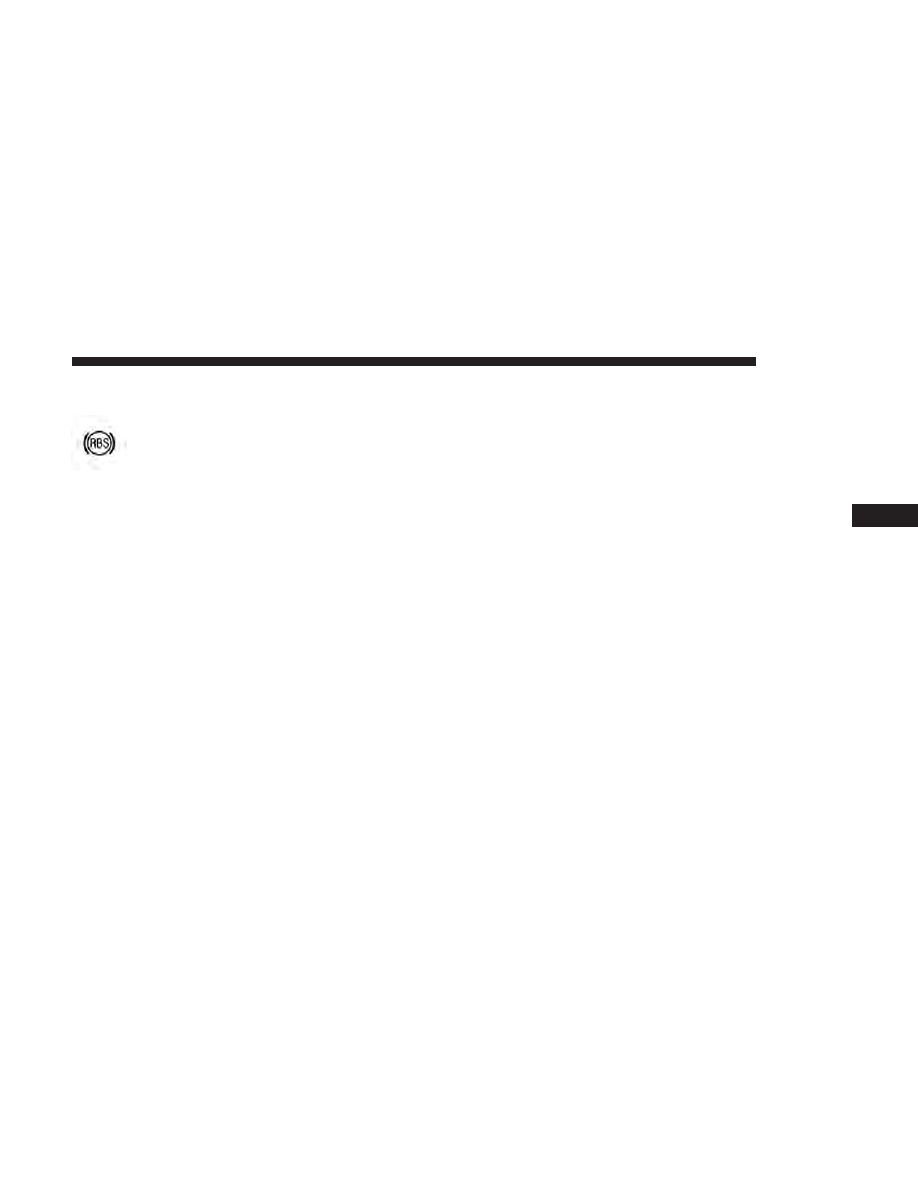Fiat 500e (2018 year). Manual - part 7

Regenerative Braking System (RBS)
Your 500e has a Regenerative Braking System
(RBS). The RBS reduces the high voltage battery
consumption of the vehicle, particularly in stop-
and-go city traffic. The electric motors which
propel the vehicle forward can operate as generators when
braking. The RBS recharges the high voltage battery under
certain braking conditions by recapturing energy that
would otherwise be lost while braking. The electric power
that is generated goes back into the high voltage battery for
later use, for example when acceleration is desired.
The RBS uses conventional hydraulic friction brakes, re-
generative braking, or a combination to slow the vehicle. If
the system detects slippery conditions while braking,
ONLY friction is used to slow the vehicle. The RBS can
result in extended life of the hydraulic service brakes;
however, all inspection, scheduled maintenance, and ser-
vice intervals for the vehicle service brakes must be fol-
lowed.
AUXILIARY DRIVING SYSTEMS
Tire Pressure Monitor System
The Tire Pressure Monitor System (TPMS) will warn the
driver of a low tire pressure based on the vehicle recom-
mended cold placard pressure.
The tire pressure will vary with temperature by about 1psi
(7 kPa) for every 12°F (6.5°C). This means that when the
outside temperature decreases, the tire pressure will de-
crease. Tire pressure should always be set based on cold
inflation tire pressure. This is defined as the tire pressure
after the vehicle has not been driven for at least three
hours, or driven less than 1 mile (1.6 km) after a three hour
period. The cold tire inflation pressure must not exceed the
maximum inflation pressure molded into the tire sidewall.
Refer to “Tires – General Information” in “Servicing And
Maintenance” for information on how to properly inflate
the vehicle’s tires. The tire pressure will also increase as the
vehicle is driven. This is normal and there should be no
adjustment for this increased pressure.
The TPMS will warn the driver of a low tire pressure if the
tire pressure falls below the low-pressure warning limit for
any reason, including low temperature effects and natural
pressure loss through the tire.
5
SAFETY
105